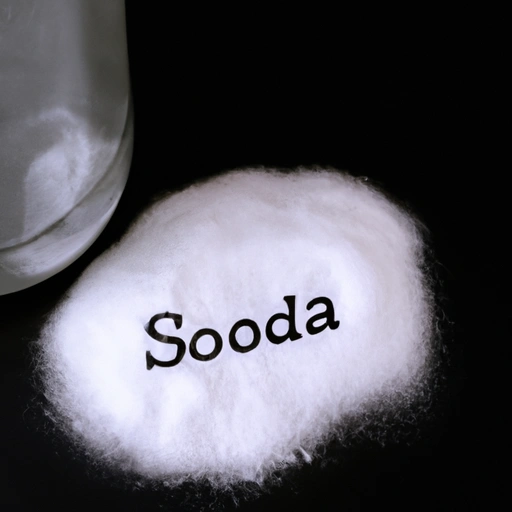Soda
Description

Soda, often referred to in food recipes as baking soda or sodium bicarbonate, is a chemical leavening agent commonly used in baking. Its chemical formula is NaHCO3. When mixed with an acid, soda undergoes a reaction that releases carbon dioxide gas. This process helps to leaven doughs and batters, resulting in the light and fluffy textures found in cakes, cookies, and bread.
In recipes, soda is typically measured in teaspoons (tsp) or tablespoons (tbsp) in American units, and in grams (g) or milliliters (ml) in European and Azjan metric units. A teaspoon corresponds to about 5 grams or 5 ml, while a tablespoon is approximately 15 grams or 15 ml.
Common uses
Soda is primarily used as a leavening agent in baked goods. It reacts with acidic components in recipes, such as lemon juice, vinegar, or yogurt, to create the rise in doughs and batters. Beyond baking, it is valued for its deodorizing and cleaning properties and is often used as a household cleaner.
Nutritional value
Calories
Soda is calorie-free as it is not consumed for its energy value.
Protein
Soda contains no protein.
Fat
Soda is fat-free.
Carbohydrates
Soda contains no carbohydrates.
Vitamins
Soda does not contain vitamins.
Minerals
Soda provides a small amount of sodium when used in food preparations.
Health benefits
While soda is not consumed for its nutritional benefits, it can aid in digestion and help neutralize stomach acid when taken as an antacid. Additionally, it is sometimes used in oral hygiene products for its teeth whitening properties and ability to promote fresh breath.
Potential risks
Consuming large amounts of soda can lead to an imbalance of acid-base in the body, known as metabolic alkalosis. It is also high in sodium, which can contribute to increased blood pressure when taken in excessive amounts. It should be used in moderation within recommended culinary doses.
Common recipes
Soda is a key ingredient in many baked goods, such as cookies, cakes, muffins, and quick bread. It is also used in pancake and waffle batters.
Cooking methods
Soda is used in baking methods, where it is combined with acidic ingredients to create a chemical reaction that produces carbon dioxide and causes the dough or batter to rise.
Pairing with other ingredients
Soda pairs well with acidic ingredients like buttermilk, lemon juice, and vinegar, which are necessary to activate its leavening properties. It also works well with cocoa powder in chocolate recipes for a richer flavor.
Summary
Soda, or sodium bicarbonate, is a multipurpose ingredient renowned for its role in baking as a leavening agent. It contributes to the texture and volume of various baked goods. While it offers minimal nutritional benefits, it has uses in promoting digestive and oral health. However, its high sodium content demands careful use to avoid health risks. Soda's culinary applications are vast, encompassing a range of recipes and cooking methods, especially when paired with acidic ingredients.